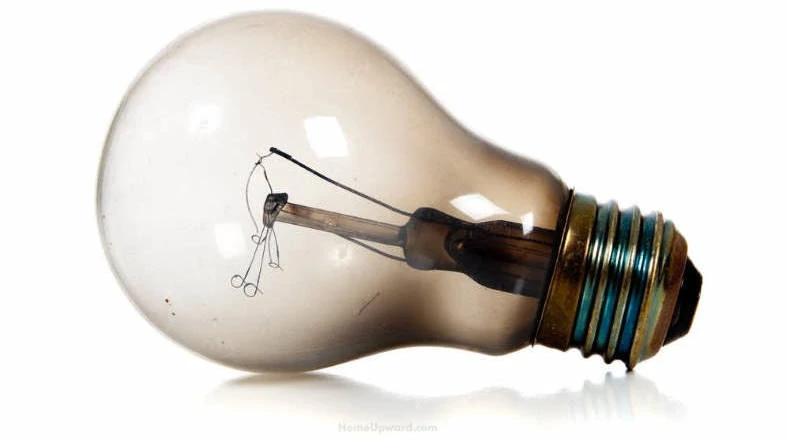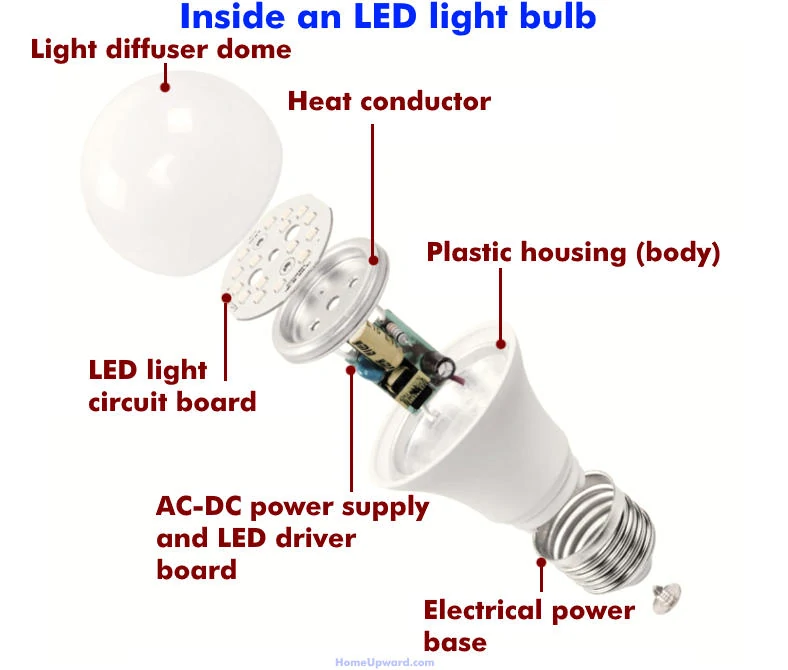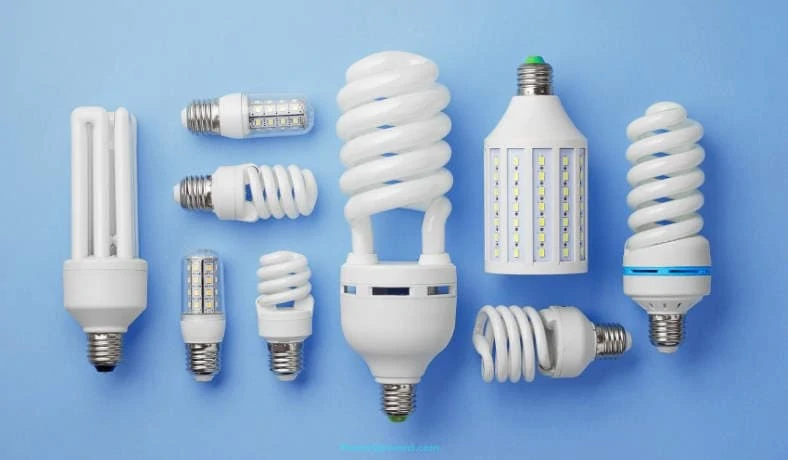Hard Turning on Fluorescent Lights in Summer
As simple as they are (in most cases, anyway) light bulbs can be a headache when they quit working. Sometimes – but not always – there's an easy way to know if it's really a dead light bulb.
But what about when you're not sure? What a pain!
In this article, I'll explain how to tell if a light bulb is burnt out or bad along with a list of reasons this can happen.
Contents
- Is your bulb burned out? How to tell if a light bulb is bad
- Checking for a burned out bulb
- How to tell if a light bulb is bad (failed for other reasons)
- How to tell if an LED bulb is bad
- LED bulb vs incandescent (filament) bulb differences
- What causes light bulbs to burn out quickly?
- The average lifespan of light bulbs
- How to tell when a fluorescent bulb is burned out
- What happens when a fluorescent light bulb dies?
- Tips for extending your fluorescent bulb life
- How to tell if halogen bulb is blown
- Tips for extending halogen bulb life
- More great bulb and lighting articles
Is your bulb burned out? How to tell if a light bulb is bad

To clarify, when I say "burnt out" or "gone bad" for this article, I mean 2 kinds of ways bulbs can stop working:
- Burned out: the filament has burned and no longer conducts electricity (in traditional incandescent bulbs).
- Gone bad: any other kind of failure (usually like physically broken parts) in any kind of bulb including light emitting diode (LED) or fluorescent bulbs. These types don't burn out in the same way as traditional bulbs.
Checking for a burned out bulb
The signs that your light bulb has burnt out are more obvious than if it has gone bad. The first sign that your light bulb burned out is if the light goes out suddenly, especially right after turning the switch on.
This generally happens to standard incandescent (filament) bulbs as the filament can have a surge of electrical current that overloads the weak point in the filament wire. When that happens, the wire suddenly burns at that point and breaks, causing an open circuit, and the flow of electricity stops.

Shown: A close of up of a broken or burned out light bulb filament in an incandescent bulb. This can happen for several reasons even while a bulb is still fairly new. Incandescent bulbs are susceptible to damage from shock (hard bumps) and other things.
First, turn the light switch off and remove the bulb from the light fixture. You may need to wait for the bulb to cool down – never attempt to remove a light bulb that has been in use for a while. (I generally give my bulbs about 5 minutes or so to cool off before removing them by hand).
Next, check the bulb closely with your eyes. If the inside of the bulb looks like it has a coating of black powder, or in general is black (when it should be clear or white,) then the bulb has burnt out.
This means the filament itself has burnt out due to a chemical coating defect or an electrical weak point that overheated and burned up due to heat and electrical stress. Because incandescent bulbs are mass-produced and use a reactive chemical coating on a very thin & fragile metal wire that produces light, they're prone to failure when things go wrong.
The shake test
This is especially helpful for "soft white" bulbs that aren't clear and you can't see through. The trick is to shake the bulb lightly once the bulb has cooled off completely. If you hear something rattling around, the filament has broken, and you know the bulb has burnt out or is otherwise damaged.
Low wattage bulbs may produce a very unpleasant smell if they have burnt out. If you suddenly smell something generally "burnt" or burnt plastic, try removing the bulb and letting the area air out. If removing the light bulb has made the burnt smell disappear, then you know your light bulb burnt out.
Tip: The shake test can also be used on LED bulbs sometimes, but for a different reason. I'll cover that later.
How to tell if a light bulb is bad (failed for other reasons)
Figuring out if your light bulb is bad is a little bit harder than one that's clearly burned out – but not by much.
The shake-and-rattle method works here, as well. If your bulb rattles but still works, you should still replace it.
A rattling sound means the filament (or internal wire that creates light) is broken or damaged and will burn out or blow soon if it hasn't already. It can also mean that some of the internal glass components that hold the filament in place have broken free.
The cause of your lightbulb not working could also be the light fixture itself. Take the bulb and put it in a compatible light fixture that you are absolutely positive works. If the bulb now works, you know that the fixture or connection is the problem. If it doesn't, throw the bulb away and use a new one!
Tip: If the bulb was in a lamp, be sure the lamp switch isn't the problem. I've had lamp switches fail completely under normal use and the bulb would no longer work.
Using a test meter to check bulbs

Another way to check bulbs is to use a test meter with a resistance (Ohms) setting. Multimeters can measure the condition of a filament in incandescent bulbs so you'll know if it's really bad, completely broken, or in a weird condition preventing it from working
When measuring resistance (Ohms) for a bulb, it'll be somewhere around 200 Ohms or less typically. An open circuit reading (infinite Ohms, can't get a measurement) means there's a broken internal connection somewhere.
For example, I've tested small 15W car tail lamp bulbs and measured somewhere around 120 to 140 Ohms for ones that are working ok. Similarly, I've measured somewhere under 200 Ohms for regular home light bulbs that were alright.
How to tell if an LED bulb is bad

Unfortunately, there's not much you can do to check an LED light bulb for several reasons:
- There's no filament to burn out.
- Most LED bulbs have an opaque (non-clear) cover so you can't see inside.
- They're more complicated and use a number of electronic parts to work, meaning you can't test them without the right test equipment.
- Most aren't made to be taken apart.
There are a few things you can do to check them out, however:
- As I mentioned earlier, you can use the shake test to shake an LED bulb. If you hear parts moving around, it's likely the bulb has failed due to a component breaking free.
- If you're using a dimmer, remove the bulb from the dimmer socket and try it in a standard (non-dimmed) socket.
LED bulbs are better than they once were, but are still susceptible to failure because there are so many parts inside, lots of soldered connections that can fail, and they're often made to be cheap. Because they're often made so cheaply to compete price-wise, it's not surprising when they fail (although it's a lot less likely with brand name LED bulbs).
Generally speaking, when an LED bulb fails it's usually due to a faulty power supply board.
The truth is that it's very unlikely you'll be able to fix an LED bulb when it dies. The amount of time and money it would take would be more than just replacing it with an affordable similar one.
LED bulb vs incandescent (filament) bulb differences
LED bulbs are designed to have a significantly longer lifespan than a standard bulb as well as use less energy. In general, an LED has a 10-year lifespan or somewhere around 25,000 hours of use. (Incandescent bulbs typically have a 1,000 to 2,000-hour lifespan for example)
LED bulbs need a driver board/power supply to convert the alternating current (AC) supply voltage into a direct current (DC) supply. They also regulate the electrical current sent to the LED light chips. That's because LEDs are diodes that can only work with DC electrical current and their light output changes with the current flowing through them (rather than voltage like filament bulbs).
When an LED bulb quits working it's typically because the LED driver/power supply board has failed rather than the LEDs themselves.
If your light fixture utilizes an incandescent bulb, it's really easy to just swap out light bulbs. However, if it uses a built-in LED light, you'll need to either replace the entire fixture or fix the driver.
What causes light bulbs to burn out quickly?

Light bulbs don't last forever. While some people might get an average of four to eight months or more life out of their incandescent bulbs, some things you're doing could cause your bulbs to burn out or go bad faster than that.
Common reasons bulbs blow quickly:
- High voltage problems in your home (the average is 120 volts). This causes bulb filaments to burn hotter and with more power than they should, decreasing their life and making them susceptible to burning out quickly.
- Excessive vibration from unbalanced fans (like in ceiling fans) or mounted fixtures subject to vibration or sudden movement/shock.
- Socket tabs that are squished, damaged, or pushed to the bottom.
- Using the wrong bulb wattage for the appliance or fixture.
- A loose bulb in the socket (bad socket, too much play instead of a tight fit) or loose wire connections.
- Poor manufacturing quality – many light bulbs are very cheap in quality and the manufacturing process causes a higher defect rate than higher quality, slightly more expensive bulbs.
- Using a bulb that's too big for its socket or fixture, or using a bulb that's a higher wattage than recommended for a light fixture.
- Excessive heat problems*.
- Using a dimmer switch that's incompatible with the light fixture or bulb being used.
*Bulbs are known to have a shorter life if they're in a badly ventilated fixture where the heat can't escape such as in recessed ceiling fixtures. The excess heat builds up (since it can't escape and cool the bulb), causing the bulb or LED bulb driver to go bad, resulting in the entire light going out.
If you have recessed lights, make sure you're very careful to use a lower-wattage bulb or especially a more efficient LED bulb to avoid building up extreme heat. Also, make sure your fixture is rated for insulation and the insulation's temperature rating is very high.
The average lifespan of light bulbs
Incandescent light bulbs have a lifespan of 750 – 2,000 hours of use. They're usually pretty cheap, come in a wide variety of colors and light temperatures, and can be purchased almost anywhere.
Fluorescent light bulbs are a longer-lasting version of the traditional filament bulb. They average 24,000 – 36,000 hours of lifetime use.
Compact fluorescent lights (CFLs) may take a few moments to warm up, but they boast a long lifespan for a standard sized light bulb. Expect your CFL to last around 8,000 hours; some even up to 20,000 hours!
Halogens are more efficient than incandescents and are known for their crisp light that can be a more natural white light that promotes health and less eye fatigue. Halogens last an average of 2,000 to 4,000 hours.
LEDs are at the top of the ladder when it comes to lightbulbs. Often, LEDs are rated in years, not just hours. LEDs are known to last 30,000 to 50,000 hours but often last longer than that. However, that only applies to high-quality LED bulbs that aren't the "bottom of the barrel" in terms of price & quality.
Higher-quality LED bulbs produce a more natural (less blue) light and use better quality components with a lower rate of failure.
How to tell when a fluorescent bulb is burned out

Fluorescent bulbs are more traditionally known as fluorescent tubes since in the past they used to be mainly found in long tube-shaped bulbs for commercial building ceiling light fixtures. You can still find them in buildings, warehouses, garages, and more but they can be bought for home projects too.
These days, though, you can find affordable fluorescent lights with a ballast built into the base that can replace traditional incandescents for energy savings, although not quite as efficiently as today's LED options.
Fluorescent lights are similar to the incandescent bulb in that they use an internal filament. However, fluorescents have ballasts on each end of the light as they require a high voltage to pass through the bulb in order to excite electrons and create light.
What happens when a fluorescent light bulb dies?
When a fluorescent bulb burns out, a dark or blackish tint (kind of like a dark-colored line) will appear on one or both sides of the bulb. If you notice a blackish tint to your fluorescent tube, it's time to go ahead and replace it as the light output is already lower and it's on its way out. Dying lights can begin creating a very distracting flicker when they're on their last leg.
Another sign your fluorescent bulb has gone bad is a gradual decrease in overall light output. If your garage or space is darker than it used to be, you may want to consider replacing the lightbulb.
One of the most recognizable signs your fluorescent bulb has burned out – or is in the process of doing so – is a smell. The burnt smell will get worse when the light is on.
Tips for extending your fluorescent bulb life
As crazy as it sounds, fluorescent bulbs are unique in that they'll last longer the longer you leave them on consistently. Turning fluorescent lights on and off a lot is hard on them.
Here are some great tips:
- Use fluorescents in areas where they will be on consistently rather than turned off and on repeatedly.
- If your fluorescent bulb appears to not be working but still can produce light, you can inspect the ballast and replace just the ballast. Bad ballasts are somewhat common and will cause bulbs to fail completely or work erratically.
- Make sure your bulb has plenty of ventilation and isn't in trapped heat – ventilated bulbs last longer.
- Clean your bulb frequently to reduce dust and debris buildup. Always be sure to make good contact when inserting fluorescent bulbs with "tabs" or prong contact fully for the best electrical connection. A poor connection will cause issues.
How to tell if halogen bulb is blown

Halogen bulbs are also a type of incandescent light. Instead of a filament conducting light, halogens heat a thin wire inside a sealed lamp with halogen gas to produce a larger amount and quality of light.
They're brighter than average bulbs but at the cost of sturdiness and dependability. Halogen lights can even give you a sunburn from UV output!
The problem is that they may not always show clear signs of the light bulb burning out. In very few cases, you will see black marks or even a cracked bulb. To find out for sure, you can use a test meter's resistance setting to check for an open circuit or continuity. If the bulb is bad it will measure no or "infinite" ohms (open circuit condition).
Tips for extending halogen bulb life
- Halogen bulbs need to be installed in a very clean manner – even your bare finger's natural oils can cause the bulb to overheat and blow. When in doubt, use an electrical contact cleaner spray and use gloves instead of your bare hands.
- Keep your halogen clean by dusting frequently.
- Make sure the halogen bulb is in an area with free air movement or air conditioning that keeps the space around the lights at a reasonable temperature.
- Speak with an electrician to see if you need a voltage regulator to help with voltage fluctuations.
More great bulb and lighting articles
- Learn if a burnt out light bulb can cause a fire.
- Find out what happens with a higher wattage bulb in a lamp.
- Are hot light bulbs dangerous?
- Here's a guide to what type of bulb a Tiffany lamp uses.
- What is a full spectrum light bulb?
- Here's a helpful article explaining what a UVB light bulb is.
- What is a dimmable bulb?
Source: https://homeupward.com/how-to-tell-if-a-light-bulb-is-burnt-out/
0 Response to "Hard Turning on Fluorescent Lights in Summer"
Post a Comment